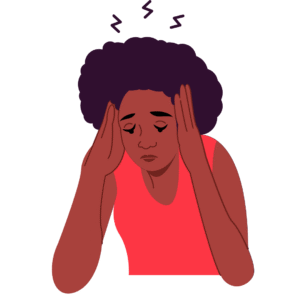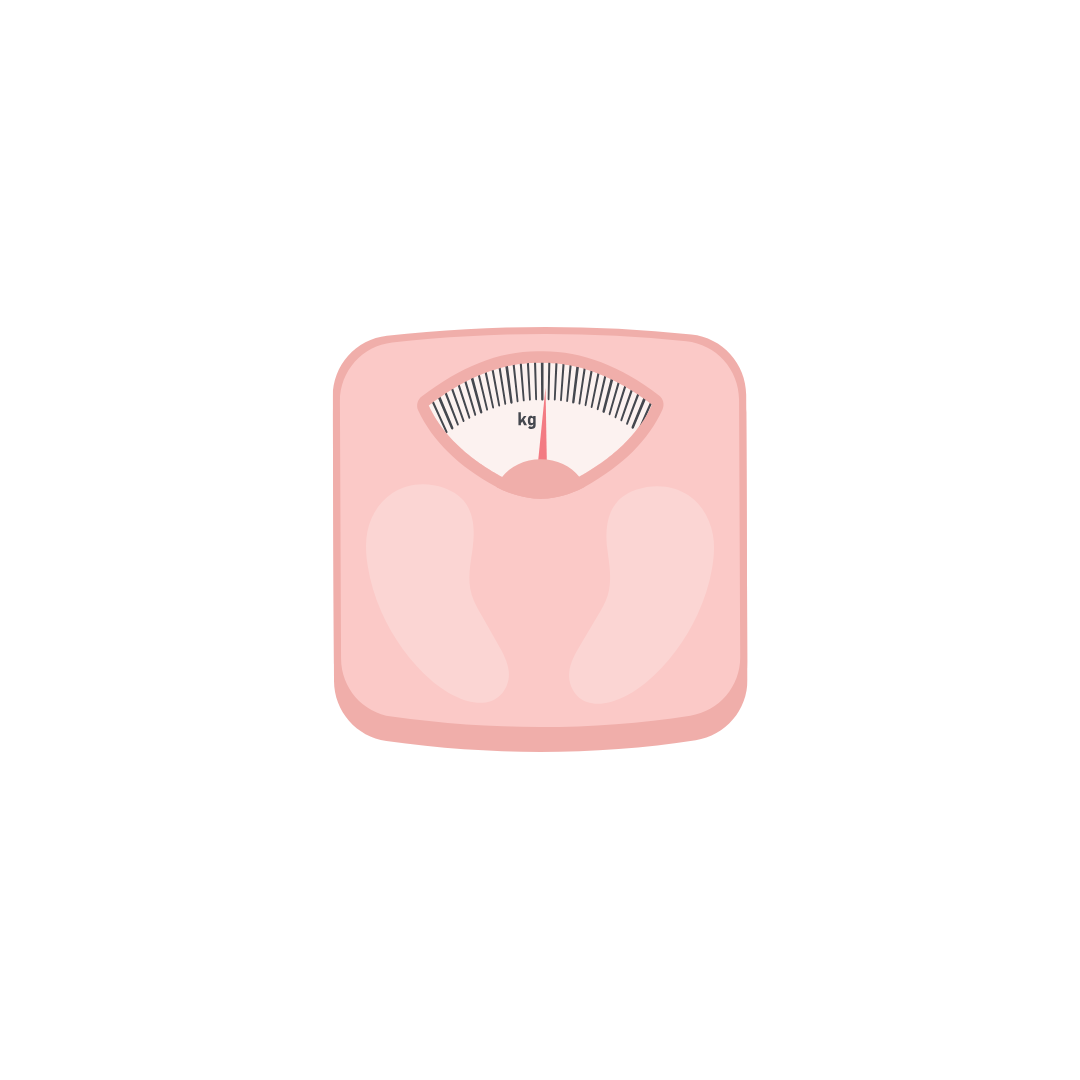The idea comes from the term Low Energy Availability (LEA), which takes into consideration the number of calories ingested and the number of calories expended or spent. When the number of calories you consume is less than the number of calories you burn from exercise, you will have less calories available to support the functions of the body for maintenance of health and performance. This can be caused by restrictive eating behaviours or overexercising. The consequences of LEA are referred to as Relative Energy Deficiency in Sports (RED-S).

1. Acute Stress
Let’s imagine you’re getting ready for a race or a final game in a series. Think about how you would feel in the moment leading up to it. Is your heart pounding faster? Is your breathing more rapid? Are you feeling tense? Now think of how you might feel after the race or the game, regardless of whether you won or lost. Typically, these symptoms would go away and you would easily go on with your day. This would be an example of acute stress, which only lasts a short period of time and does not get in the way of your mental and/or physical health.

2. Chronic Stress
Imagine having the same feeling that you would have leading up to a game, but for a longer period of time (days to years). An example could be training for a sport but not providing yourself with the right amount of calories to be able to perform or recover. Cortisol ends up having a counter-effect, in which your immune response becomes suppressed and you have an increase in inflammation in the body. This can lead to both body and performance consequences. It’s important to note that you may not feel chronic stress physically, as it is something that arises gradually; however, it does have more of a detrimental impact on the body.


Figure 1 gives you an idea of all of the possible complications caused by RED-S on the body, whereas Figure 2 emphasizes performance consequences. It also brings to light the Female Athlete Triad, wherein female athletes who restrict their intake or over-exercise can risk having low energy availability (leading to RED-S), amenorrhea (no menstrual cycle), and osteoporosis.
The idea of controlling calories seems to be considered “normal” in the sports world, but the effects are not properly considered. In fact, these methods can be somewhat counterproductive for the goals intended. For example, having less energy available for working muscles will lead to a more rapid onset of fatigue. Furthermore, recovery is impaired because there will not be enough energy available to replenish stores lost in previous training sessions. Consequently, there is an increased risk of injuries and chronic fatigue.
How can you increase your awareness in in case you may be heading down the path of RED-S?

Some of the signs of RED-s include:
Weight loss/underweight
Recurrent illnesses (colds and flus)
Decreased sports performance
Mood changes
While being aware of the signs is beneficial, it is just as important to implement strategies in your life to reduce stress.

Eating Habits
- Eating a variety of foods: fruits, vegetables, grains, protein sources AND “fun foods” (sweet and/or salty foods)
- To avoid skipping meals, prepare meals ahead of time or make simple meals that don’t take up too much time or energy

Proper Recovery
- Take rest days!!!
- Drink a lot of water
- Stretch and/or foam roll
- Balanced eating habits (see above)

Bedtime Routine
- Create and stick to a bedtime schedule to have a consistent sleeping pattern
- Aim for 7-9 hours of sleep a night
- Disconnect and wind down about 30 minutes before bedtime

Mental Health
- Meditate
- Talk to a friend
- Journal thoughts/feelings
Conclusion
Having a certain level of stress in your life can be considered healthy, until it begins to impact your daily functioning. In sports, it’s easy to stress the body unconsciously and without direct and visible impact, such as through restrictive eating behaviours and/or overtraining. This can lead to a variety of physiological and performance consequences. It is important that alongside training, you are following strategies in your life to help reduce stress in order to prevent injuries, improve performance and optimize muscle strength and endurance. This can be done through eating and sleeping habits, proper recovery practices and mental health awareness. To be the best athlete you can be, make sure to treat your body the best way you can so that it can work for you rather than against you.
If you are curious to see how we can support you, reach out to us to see how we can help at 514-437-4260 or at info@sooma.ca. You can also book an appointment directly through this link.
Written by

Vanessa Anoia
Registered Dietitian
References
- Mountjoy, M., Sundgot-Borgen, J.K., Burke, L.M., Ackerman, K.E., Blauwet, C., Constantini, N., Lebrun, C., Lundy, B., Melin, A.K., Meyer, N.L., Sherman, R.T., Tenforde, A.S., Torstveit, M.K., & Budget, R. (2018). IOC consensus statement on relative energy deficiency in sport (RED-S): 2018 update. British Journal of Sports Medicine, 52. doi:10.1136/bjsports-2018-099193
- Mountjoy, M., Sundgot-Borgen, J.K., Burke, L.M., Carter, S., Constantini, N., Lebrun, C., Meyer, N.L., Sherman, R.T., Steffen, K., Budget, R., Ljungqvist, A., & Ackerman, K.E. (2015). RED-S CAT: Relative Energy Deficiency in Sport Clinical Assessment Tool. British Journal of Sports Medicine, 49. doi:10.1136/bjsports-2014-094559
- Sin, E.L.L., Chow, C., & Cheung, R.T.H. (2015). Relationship between personal psychological capitals, stress level, and performance in marathon runners. Hong Kong Physiotherapy Journal, 33. doi:10.1016/j.hkpj.2015.03.002
- Vitetta, L., Anton, B., Cortizo, F., & Sali, A. (2005). Mind-Body Medicine: Stress and Its Impact on Overall Health and Longevity. Annals New York Academy of Sciences, 1057. doi:10.1196/annals.1322.038
- Wasserfurth, P., Palmowski, J., Hahn, A., & Krüger, K. (2020). Reasons for and Consequences of Low Energy Availability in Female and Male Athletes: Social Environmental, Adaptations, and Prevention. Sports Medicine – Open, 6(44). doi:10.1186/s40798-020-00275-6




























































